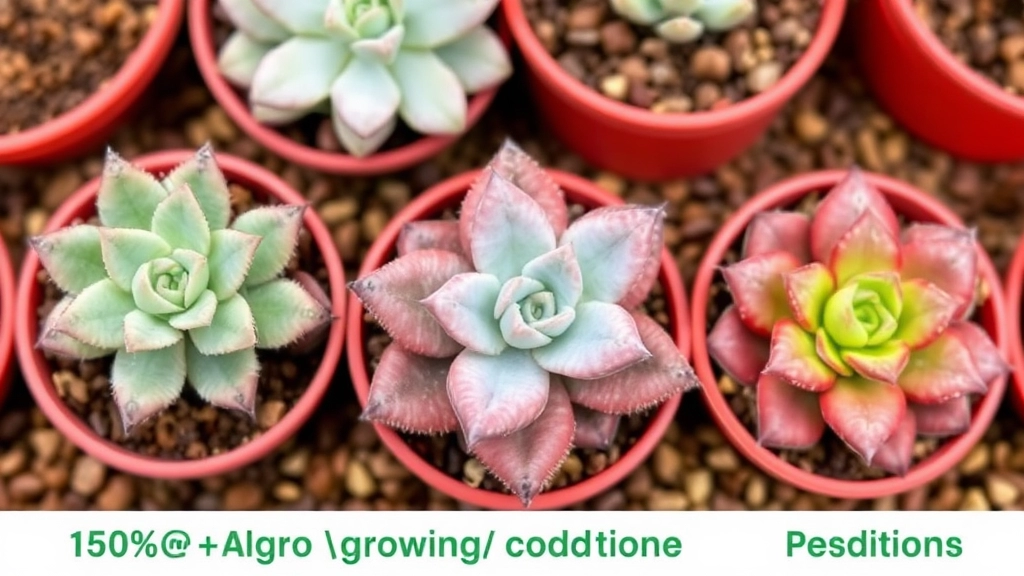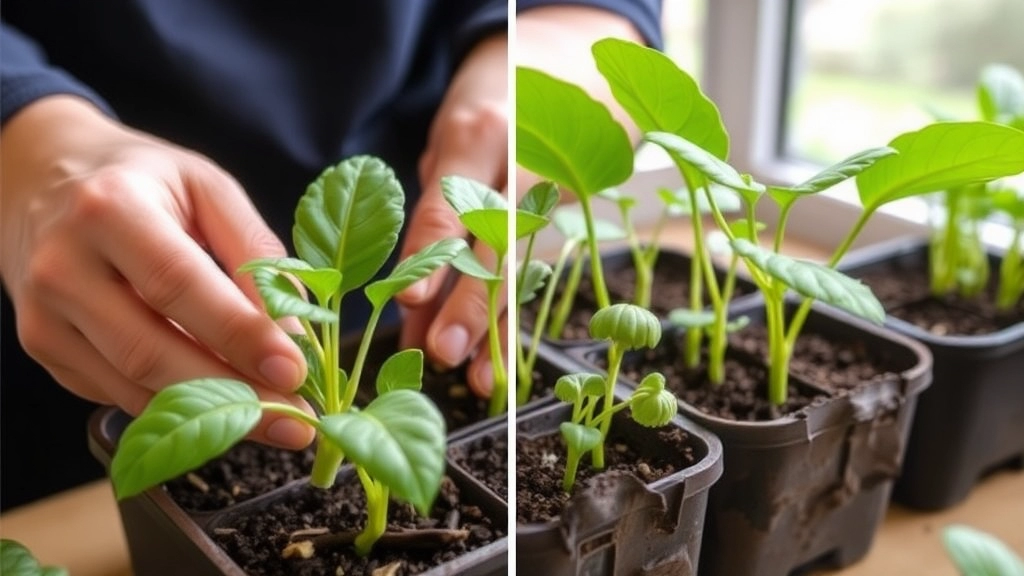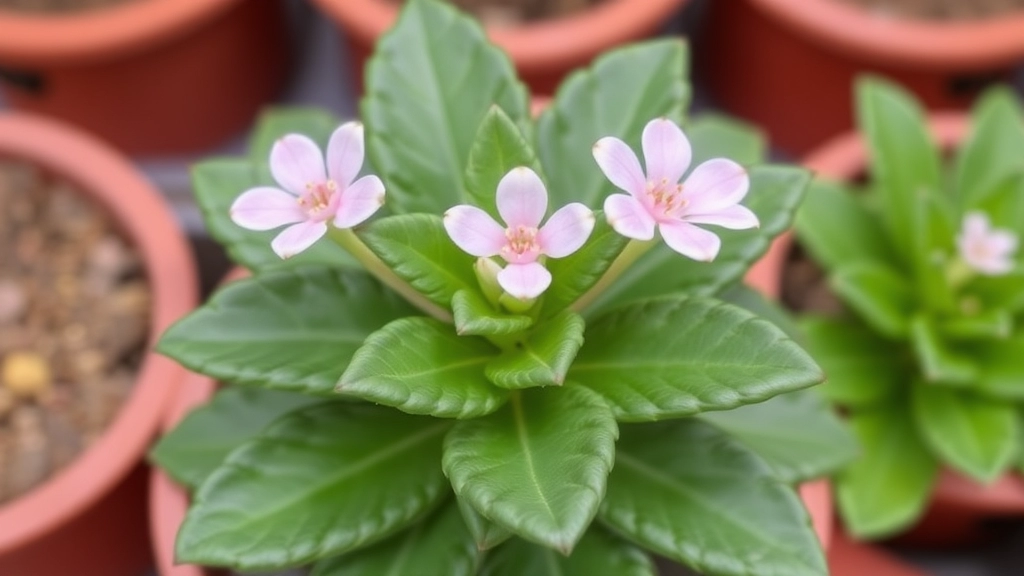Introducing the Kalanchoe Beharensis ‘Maltese Cross’
Looking to add a unique touch to your plant collection? The Kalanchoe Beharensis ‘Maltese Cross’ is a stunning succulent that stands out with its distinctive foliage and easy-care nature. This guide will walk you through everything you need to know about this eye-catching plant, from its key characteristics to ideal growing conditions.
Key Characteristics
The ‘Maltese Cross’ variety of Kalanchoe Beharensis is known for its velvety, triangular leaves and striking appearance. It’s not just about looks; this succulent is also hardy and adaptable, making it a great choice for both novice and experienced gardeners.
Growing Conditions
Whether you’re planning to grow it indoors or outdoors, we’ll cover all the essential tips to keep your plant thriving.
Key Characteristics of Kalanchoe Beharensis ‘Maltese Cross’
When considering the Kalanchoe Beharensis ‘Maltese Cross’, many may wonder what makes this succulent stand out.
This unique plant boasts several key characteristics that make it a favourite among succulent enthusiasts.
Ideal Growing Conditions for Maltese Cross Succulents

So, you’re keen on nurturing a Kalanchoe Beharensis ‘Maltese Cross’? Great choice! Knowing the right growing conditions is key to keeping your succulent thriving.
Light Requirements
First off, these beauties love light.
- Bright, Indirect Sunlight: Aim for about 6 hours a day.
- Avoid Harsh Afternoon Sun: Too much direct sun can scorch those lovely leaves.
Temperature Preferences
Next up, let’s talk temperature.
- Ideal Range: They thrive in temperatures between 18°C to 24°C.
- Cooler Nights: A slight drop at night is perfectly fine, but keep it above 10°C.
Humidity Levels
Humidity? Not a big deal for Maltese Cross succulents.
- Low to Moderate Humidity: They prefer drier air, so don’t stress about keeping the humidity high.
- Well-Ventilated Spaces: This helps prevent any unwanted moisture buildup.
Location Tips
Where you place your Maltese Cross can make a world of difference.
- Indoor: Near a bright window is perfect.
- Outdoor: A sheltered spot that gets morning sun but avoids harsh afternoon rays works wonders.
Watering and Soil Requirements for Optimal Growth
When it comes to caring for Kalanchoe Beharensis ‘Maltese Cross’, understanding its watering and soil needs is crucial for thriving growth. Many plant enthusiasts often worry about overwatering, which can lead to root rot, or under-watering, which can stunt growth.
Propagation Techniques: Cutting and Leaf Method

When it comes to propagating Kalanchoe Beharensis ‘Maltese Cross’, many enthusiasts often wonder about the best methods to ensure successful growth.
Cutting Method
One of the most effective techniques is the cutting method. Here’s how to do it:
- Select a Healthy Stem: Choose a robust stem from the parent plant. Look for one that is at least a few inches long.
- Make the Cut: Use clean, sharp scissors or a knife to make a clean cut just below a leaf node.
- Let it Callous: Place the cutting in a dry, warm area for a few days. This allows the cut end to callous over, which helps prevent rot.
- Planting: After the callousing period, plant the cutting in well-draining soil. Ensure the soil is slightly moist but not soggy.
- Water Sparingly: Initially, water the cutting lightly until roots develop.
Leaf Method
The leaf method is another straightforward propagation technique. Here’s a step-by-step guide:
- Choose a Healthy Leaf: Pick a plump, healthy leaf from the plant.
- Remove the Leaf: Gently twist or cut the leaf from the stem, ensuring you take it cleanly.
- Let it Callous: Just like with cuttings, allow the leaf to callous over for a few days.
- Place on Soil: Lay the leaf flat on top of well-draining soil.
- Mist Occasionally: Lightly mist the leaf to keep it humid but avoid overwatering.
Both methods can lead to the successful propagation of Kalanchoe Beharensis ‘Maltese Cross’, allowing you to expand your succulent collection or share with friends.
As we delve into the common issues faced by Kalanchoe Beharensis ‘Maltese Cross’, it’s essential to understand how to maintain their health and vitality.
### Overwatering
One of the most prevalent problems with Maltese Cross succulents is **overwatering**. This can lead to several issues, including root rot and wilting.
#### Signs of Overwatering:
– Yellowing leaves
– Mushy stems
– A foul smell from the soil
#### Solutions:
– Ensure your pot has drainage holes.
– Allow the soil to dry out completely between waterings.
– Consider using a [soil mix designed for succulents](https://planthq.org/best-soil-for-kalanchoe-blossfeldiana-care-tips/).
### Pests
Another concern for Maltese Cross owners is **pests**, such as mealybugs and aphids. These little invaders can wreak havoc on your plant if not addressed promptly.
#### Signs of Pest Infestation:
– Sticky residue on leaves
– Visible insects or webbing
– Discoloration or wilting of leaves
#### Solutions:
– Use a cotton swab dipped in rubbing alcohol to remove mealybugs.
– Spray the plant with insecticidal soap for broader infestations.
– Regularly inspect your plants to catch issues early.
### Root Rot
**Root rot** is often a consequence of overwatering and can be a serious threat to your Maltese Cross.
#### Signs of Root Rot:
– Stunted growth
– Blackened roots when inspected
– Leaves falling off easily
#### Solutions:
– Remove the plant from its pot and inspect the roots.
– Trim away any black or mushy roots with sterilized scissors.
– Repot in fresh, dry soil, ensuring proper drainage. For more detailed care tips, check out our [expert guide on Kalanchoe Beharensis](https://planthq.org/kalanchoe-beharensis-care-expert-tips-for-healthy-growth/).
So, you’ve got your Kalanchoe Beharensis ‘Maltese Cross’ thriving, and now you’re wondering how to show it off, right? This succulent isn’t just a pretty face; it’s versatile and can elevate both gardens and indoor spaces. Let’s dive into some creative uses!
### Garden Highlights
– **Rock Gardens**: The Maltese Cross thrives in rocky settings. Pair it with stones and other succulents for a stunning display.
– **Borders and Edges**: Use it to create natural borders. Its unique shape and texture can add definition to your garden beds.
– **Container Gardening**: Perfect for pots! Mix it with other drought-tolerant plants for an eye-catching arrangement.
### Indoor Decor Ideas
– **Sunny Windowsills**: Place it in a bright spot where it can soak up the sun. It’ll not only thrive but also brighten up the room.
– **Table Centerpieces**: Use it as a focal point on your dining or coffee table. A simple pot can add a touch of elegance.
– **Shelving Units**: Its unique leaves and structure make it a fantastic addition to any bookshelf or display unit.
### Creative Pairings
– **With Other Succulents**: Combine it with different textures and colours for a vibrant display. Think Echeveria or Sedum.
– **In Terrariums**: Its size makes it ideal for terrariums. Create a mini desert landscape that’s sure to impress. For more tips on growing succulents like Kalanchoe Tomentosa, check out our [care tips and growing guide](https://planthq.org/succulent-kalanchoe-tomentosa-care-tips-and-growing-guide/).
If you’re interested in expanding your collection, you might also want to explore the [best deals and varieties of Kalanchoe Blossfeldiana](https://planthq.org/kalanchoe-blossfeldiana-for-sale-best-deals-varieties/).
FAQs on Kalanchoe Beharensis ‘Maltese Cross’
What are the light requirements for Kalanchoe Beharensis ‘Maltese Cross’?
Kalanchoe Beharensis ‘Maltese Cross’ thrives in bright, indirect sunlight. Aim for about 6 hours a day. Avoid harsh afternoon sun to prevent leaf scorching.
What is the ideal temperature range for growing Maltese Cross succulents?
These succulents prefer temperatures between 18°C to 24°C. They can handle cooler nights, but it’s best to keep it above 10°C.
Do Maltese Cross succulents require high humidity?
No, they prefer low to moderate humidity. Well-ventilated spaces are ideal to avoid moisture buildup.
Where should I place my Maltese Cross succulent?
Indoors, place it near a bright window. Outdoors, a sheltered spot that receives morning sun but avoids harsh afternoon rays is best.
What are the best methods for propagating Kalanchoe Beharensis ‘Maltese Cross’?
Two effective methods for propagation are the cutting method and the leaf method. Both involve allowing the cut end to callous over before planting in well-draining soil.
How do I propagate using the cutting method?
Select a healthy stem, make a clean cut below a leaf node, let it callous for a few days, and then plant in well-draining soil. Water sparingly until roots develop.
How do I propagate using the leaf method?
Choose a healthy leaf, remove it cleanly from the stem, let it callous for a few days, then place it flat on well-draining soil. Lightly mist occasionally to maintain humidity.
Can I grow Kalanchoe Beharensis ‘Maltese Cross’ outdoors?
Yes, you can grow it outdoors in a sheltered spot that gets morning sun but avoids harsh afternoon rays.
How often should I water my Maltese Cross succulent?
Water sparingly. Overwatering can lead to root rot. Ensure the soil is slightly moist but not soggy.
What type of soil is best for Kalanchoe Beharensis ‘Maltese Cross’?
Well-draining soil is essential. This prevents water from pooling around the roots, which can cause rot.
References
-
Kalanchoe Beharensis Care Guide
-
Succulent Light Requirements
-
Propagating Succulents: Cutting and Leaf Method
